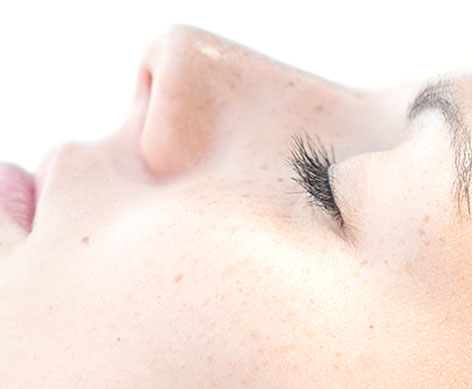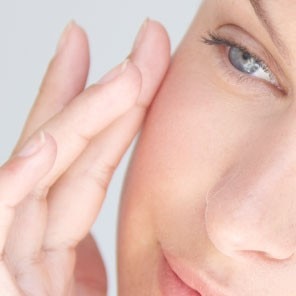Hyperpigmentation
Whatever your skin type, specific factors might trigger or lead to oversensitivity: Your skin reacts strongly when you’d rather it didn’t…

Excess pigment?
The term "hyperpigmentation" is used for a number of disparate pigmentation problems. Hyperpigmentation of the skin can be caused by excessive quantities of melanin in the skin's uppermost layers. But it's also an abnormal distribution of melanin that causes what is commonly known as "pigmentation spots".
Hyperpigmentations are often a reason for consulting a dermatologist, especially when exposed areas of the body are concerned (the face). Before any treatment, it is crucial to determine the exact cause of a pigmentation spot.
Melasma and lentigo are two of the most common forms of hyperpigmentation.
Melasma, also called "the pregnancy mask", is a form of hypermelanosis that generally appears symmetrically along areas exposed to the sun (the face in particular, but also the arms and neck). Moreover, exposure to the sun is a major factor in the worsening of the condition. The onset of melasma is directly linked to hormonal changes which occur when taking oral contraceptives or during pregnancy, but can also result from a particular genetic predisposition. Certain populations and people with dark skin (phototype IV or greater) are therefore more frequently affected than people with clear phototypes.
Lentigines: a sign of aging skin, but mostly a sign of sun exposure
Everyone has seen those little dark spots that appear on the face, neck and hands of older people. These "age spots", also called lentigines or solar lentigines, are a direct result of sun exposure and one of the first signs of cutaneous (photo)aging. The first lentigines usually appear in a person's forties, and they are more common in people with light skin. They do not pose any danger to health but they should be monitored and protected from sun exposure to prevent them from being transformed into cancerous lesions.
Once considered to be inevitable consequences of aging, these hyperpigmentations can now be lightened using various dermatological techniques. The therapeutic demand is high because these spots go against common beauty ideals that place emphasis on an even skin tone.


